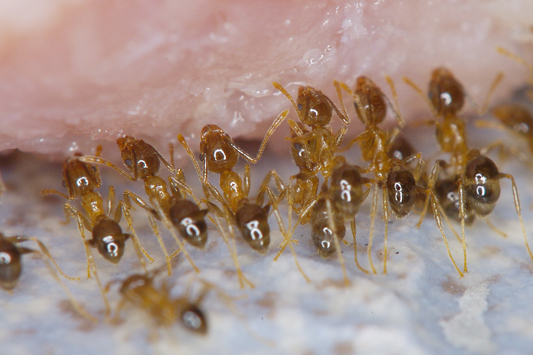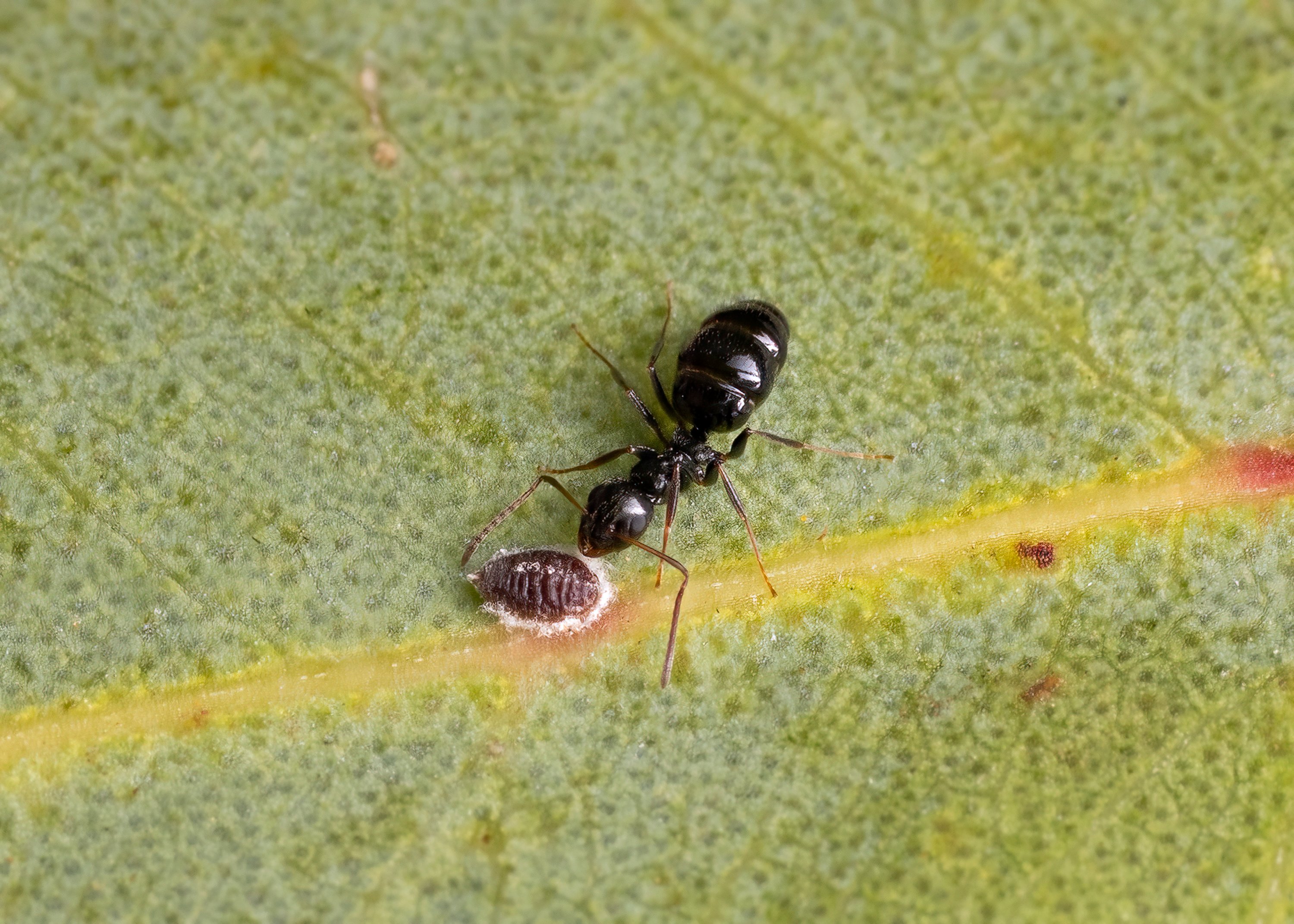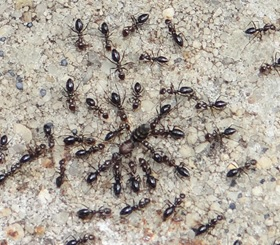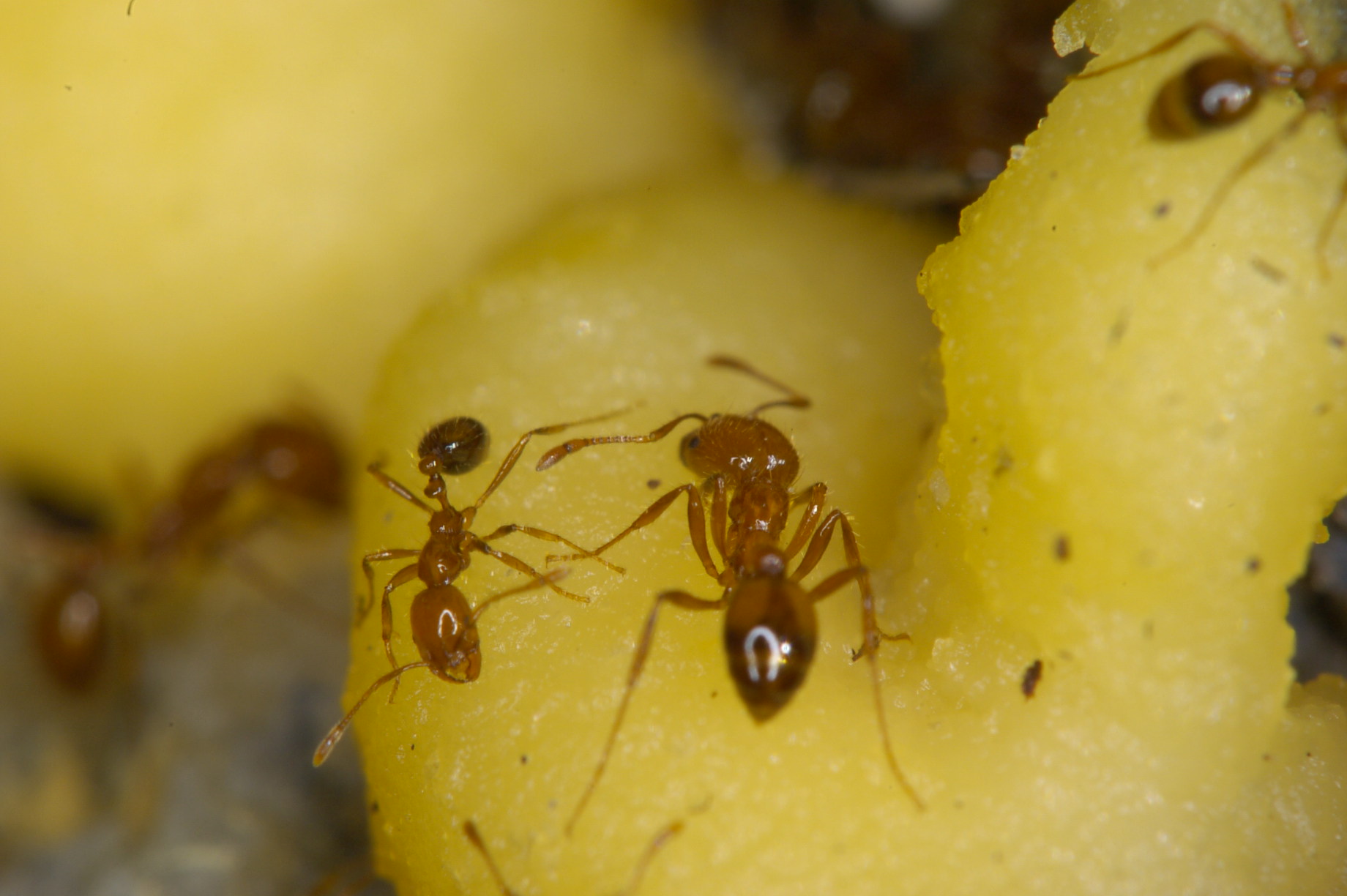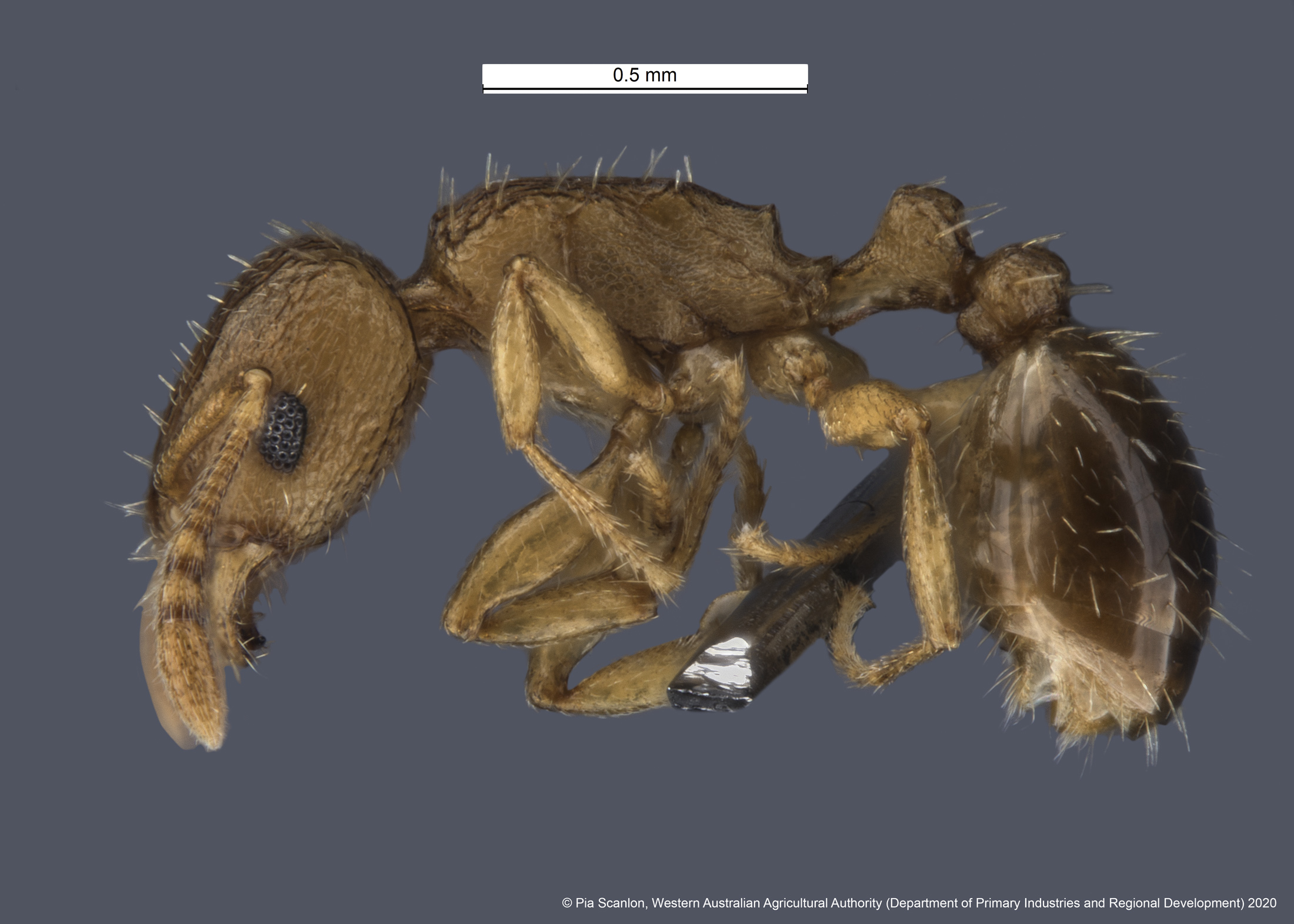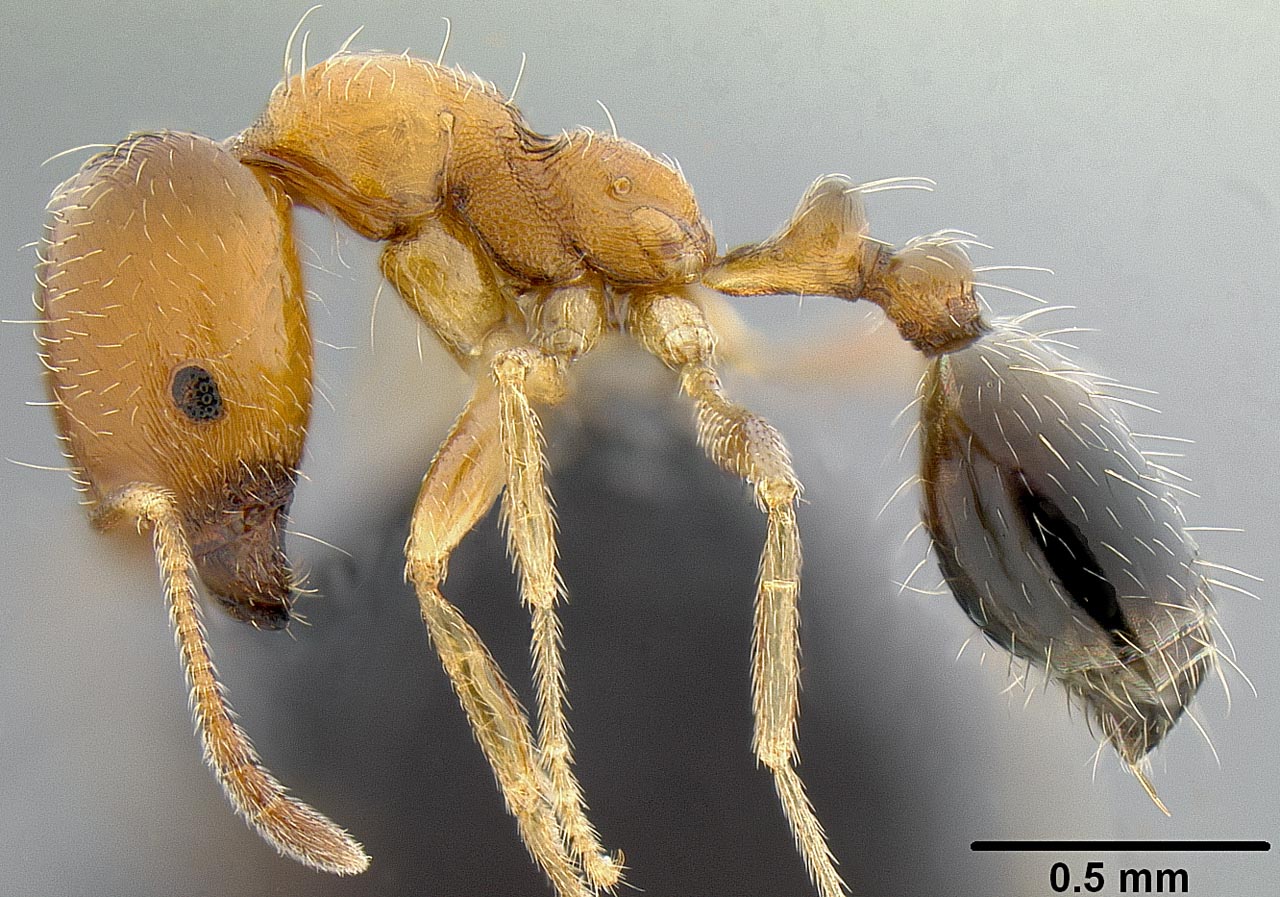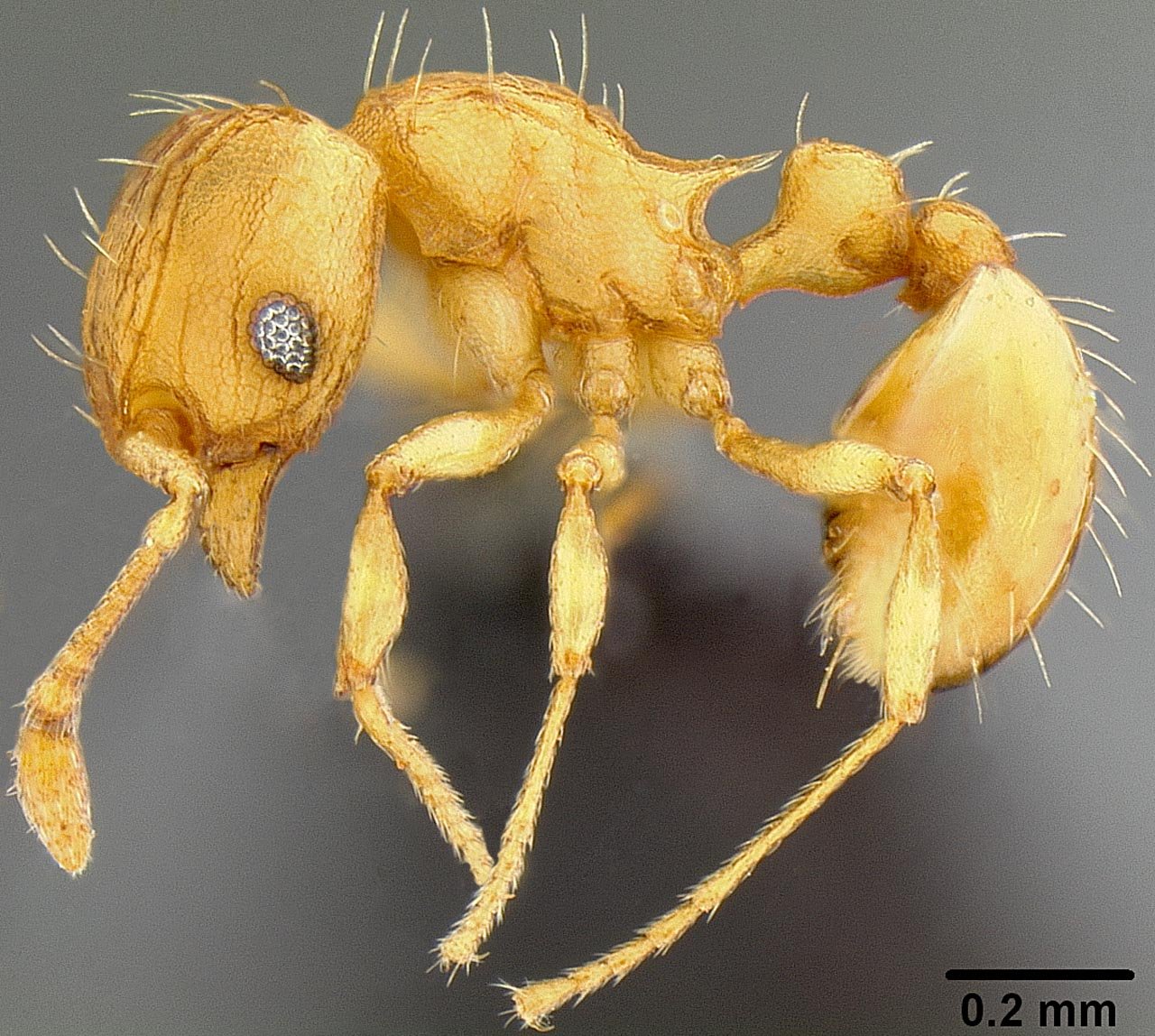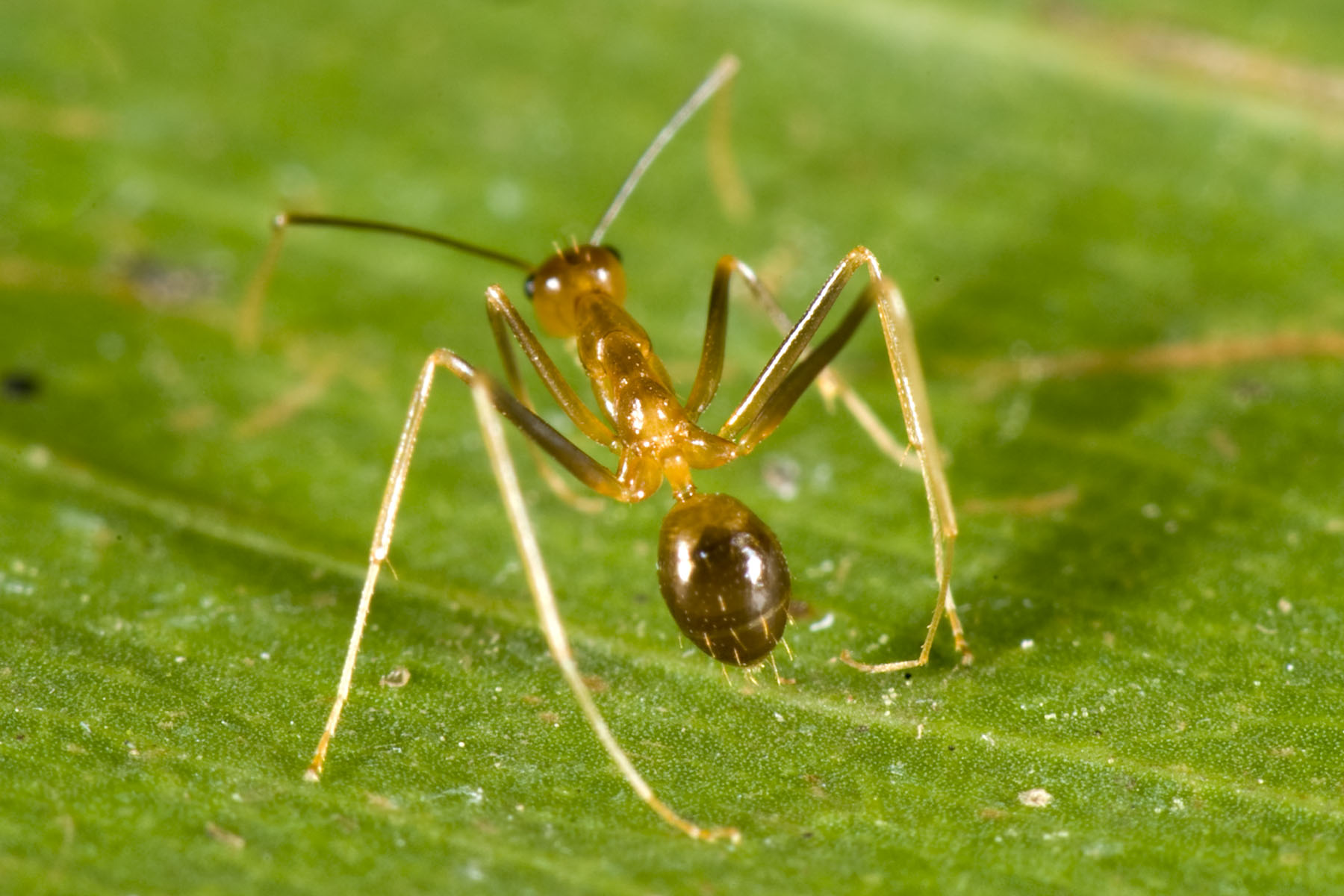High risk ants for Western Australia
You can help stop a dangerous pest from spreading
When a local business reported live fire ants, their quick action stopped a dangerous pest before it could spread. These pests can devastate the environment, economy, and the Western Australian lifestyle we love. Learn how DPIRD’s biosecurity team identified, contained, and destroyed the threat, protecting WA from one of the world’s most invasive species.
Red imported fire ant (Solenopsis invicta) (RIFA) is one of the most serious invasive ant pests in the world. It is native to South America and is known to be extremely aggressive. It can inflict painful stings on people, pets, and livestock.
What to look for
- hard to distinguish from common native ants
- small (2 to 8 mm), red-brown coloured, with a darker abdomen
- ants of many assorted sizes in one nest, with no visible entry holes
- usually aggressive if disturbed and can inflict a painful, fiery sting that can form blisters and pustules and, in some cases, anaphylactic allergic reactions.
Where to look
- around timber, logs, rocks, pavers, or bricks
- pot plants, topsoil, mulch, and potting mixes
- lawns, firebreaks, and fence lines
- untidy or overgrown areas or disturbed ground
- adjacent to buildings and other structures
- near dams, rivers, and ponds.
View our short video to find out how a report made in 2025 by a local business enabled us to stop the invasive red imported fire ant before it spread, protecting Western Australia from one of the world's most invasive species.
In 2019 RIFA was also detected in the Fremantle Port area. Following a 2-year comprehensive eradication and surveillance program by the department, WA was declared free of RIFA in October 2023.
Help us keep WA free of red imported fire ant. Read our factsheet for additional information.
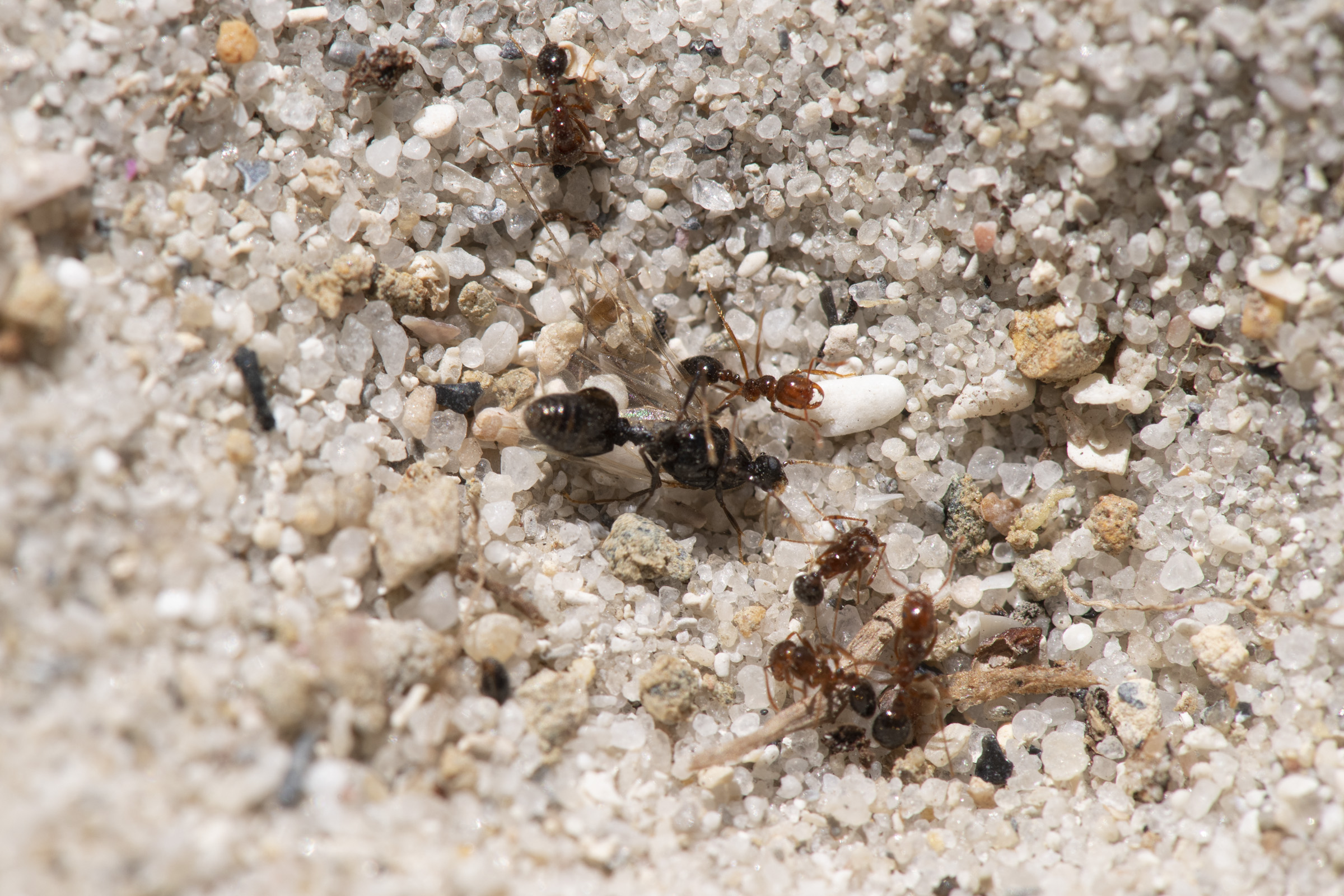
-
Red imported fire antpdf (783 KB)
Argentine ants (Linepithema humile) are an introduced major pest ant species that are established in WA. They are commonly found in urban areas, where they can enter homes in search of food and moisture.
They are very ordinary looking small brown ants and the most difficult common pest ant in WA to control as they can re-colonise quickly.
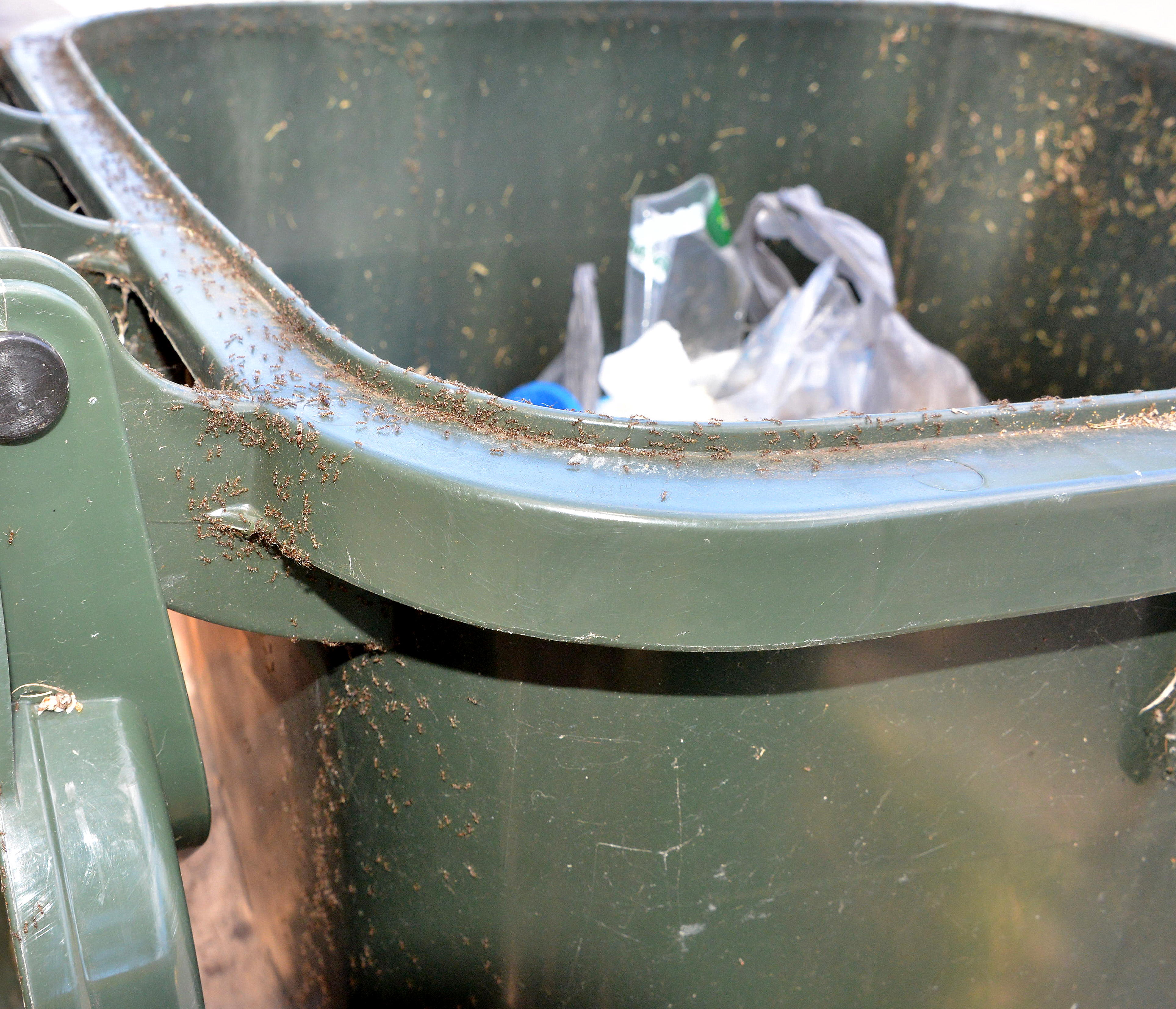
What to look for
- small and slender dark brown ants, 2.6 to 3.2 mm long
- continuous well-defined trails of slow-moving ants
- slight greasy, musty odour when crushed
- can bite, usually painless.
Where to look
- urban areas
- nests outside buildings, at the base (or in) trees
- along the edges of paths and in lawns and garden beds
- thrives in swamps and low-lying areas where moisture is plentiful.
-
Argentine ant
Coastal brown ants (Pheidole megacephala) (also known as ‘big-headed’ ants) are an introduced major pest ant species that are established in WA.
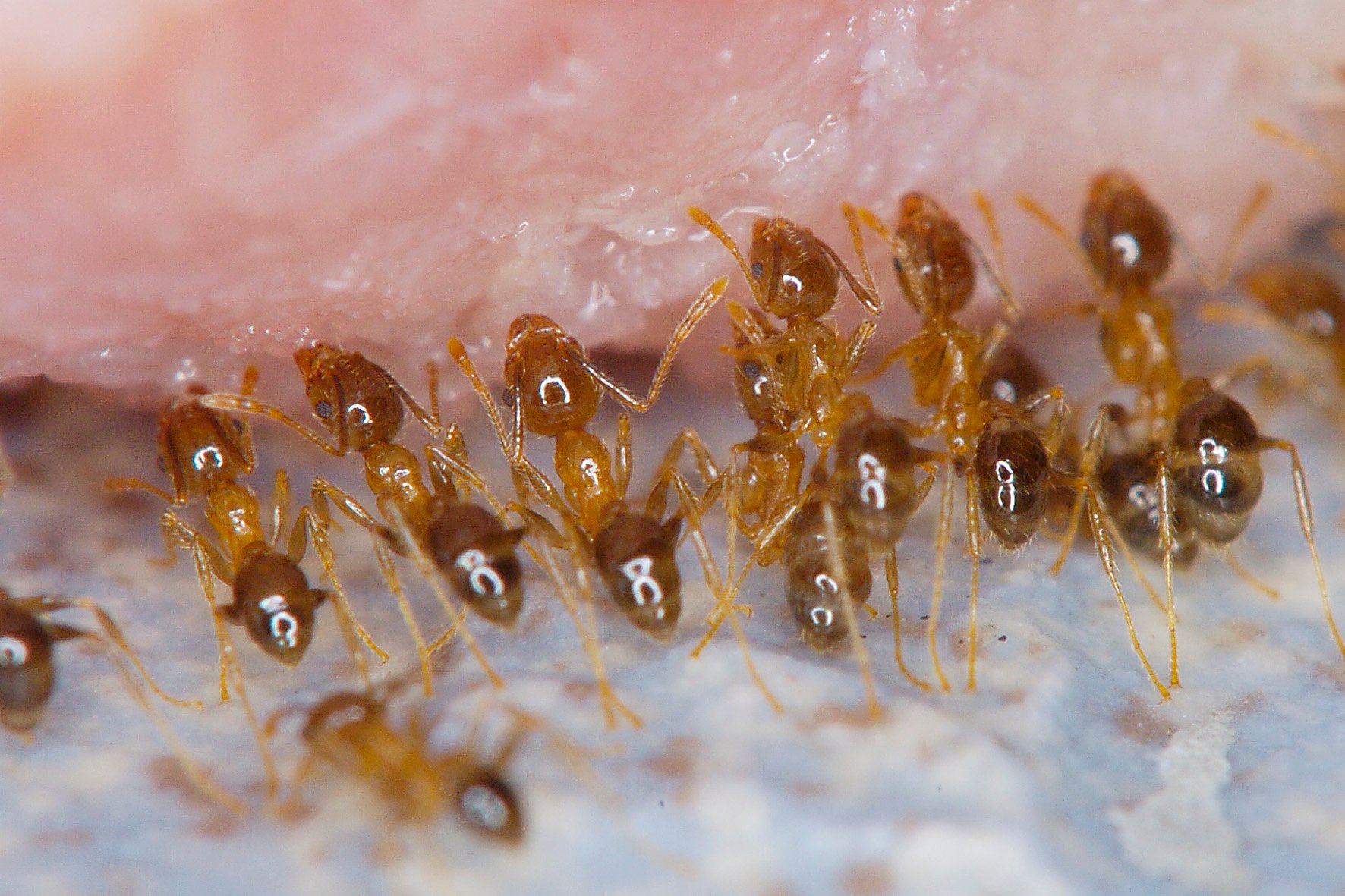
What to look for
- small, light ginger-brown coloured ants, with shiny dark brown abdomens
- two sizes — large numbers of worker ants (2 to 3 mm long) and a small number of ‘soldier’ ants (3.5 to 4.5 mm long), with a much larger head
- no obvious odour when crushed
- can sting but does not cause discomfort.
Where to look
- lawns and brick paving – look for lines of interconnected holes and small mounds of excavated soils
- enters buildings when populations outside are high
- ants may cover food put outside for pets, as they prefer fat/oil-based foods.
-
Coastal brown antspdf (444 KB)
Other invasive ants of concern to Western Australia and Australia
|
Common name and (scientific name) |
Image |
Origin |
Status in WA |
Status elsewhere Australia |
Bites or stings? |
|
(Tetramorium bicarinatum) |
|
Africa |
Established |
Established |
Painful sting |
|
(Trichomyrmex destructor)
|
|
North Africa
|
Established |
Also established in NT, NSW, QLD, VIC |
Painful sting |
|
Electric ant (little fire ant) (Wasmannia auropunctata)
|
|
Central and South America |
Not present. Prohibited entry into WA |
Localised incursions in QLD |
Painful sting |
|
(Anoplolepis gracilipes)
|
|
Southeast Asia |
Not present. Prohibited entry into WA |
Localised incursions in QLD, NT, Cocos Island and Christmas Island |
Sprays a formic acid that is painful to eyes and skin |
| Common name (scientific name) | Image | Native or introduced | Common locations | Bites or stings |
|
(Iridomyrmex purpureus) |
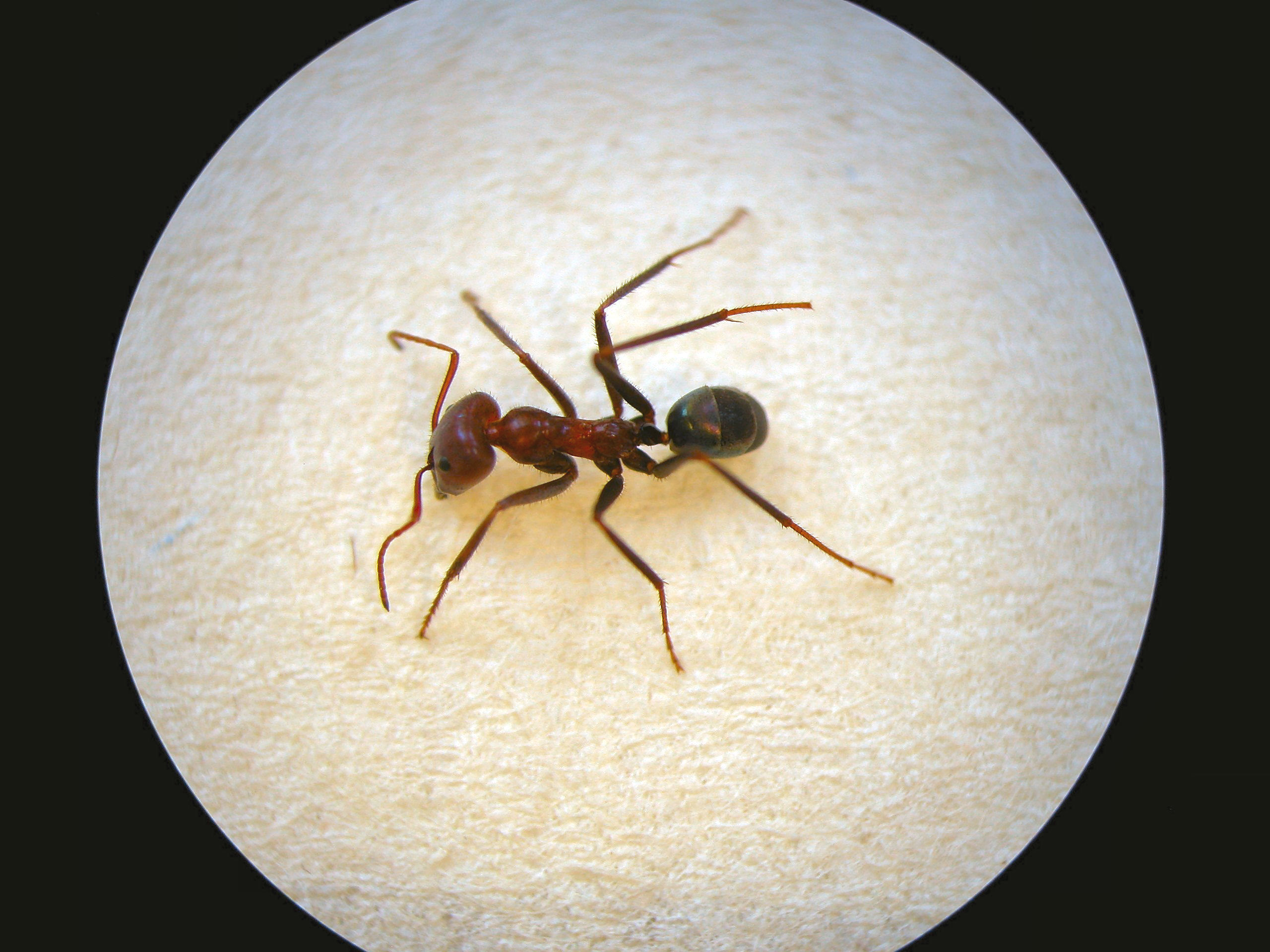 |
Native | Large mounds in open sunny areas | Bites aggressively with jaws |
|
(Myrmecia spp.) |
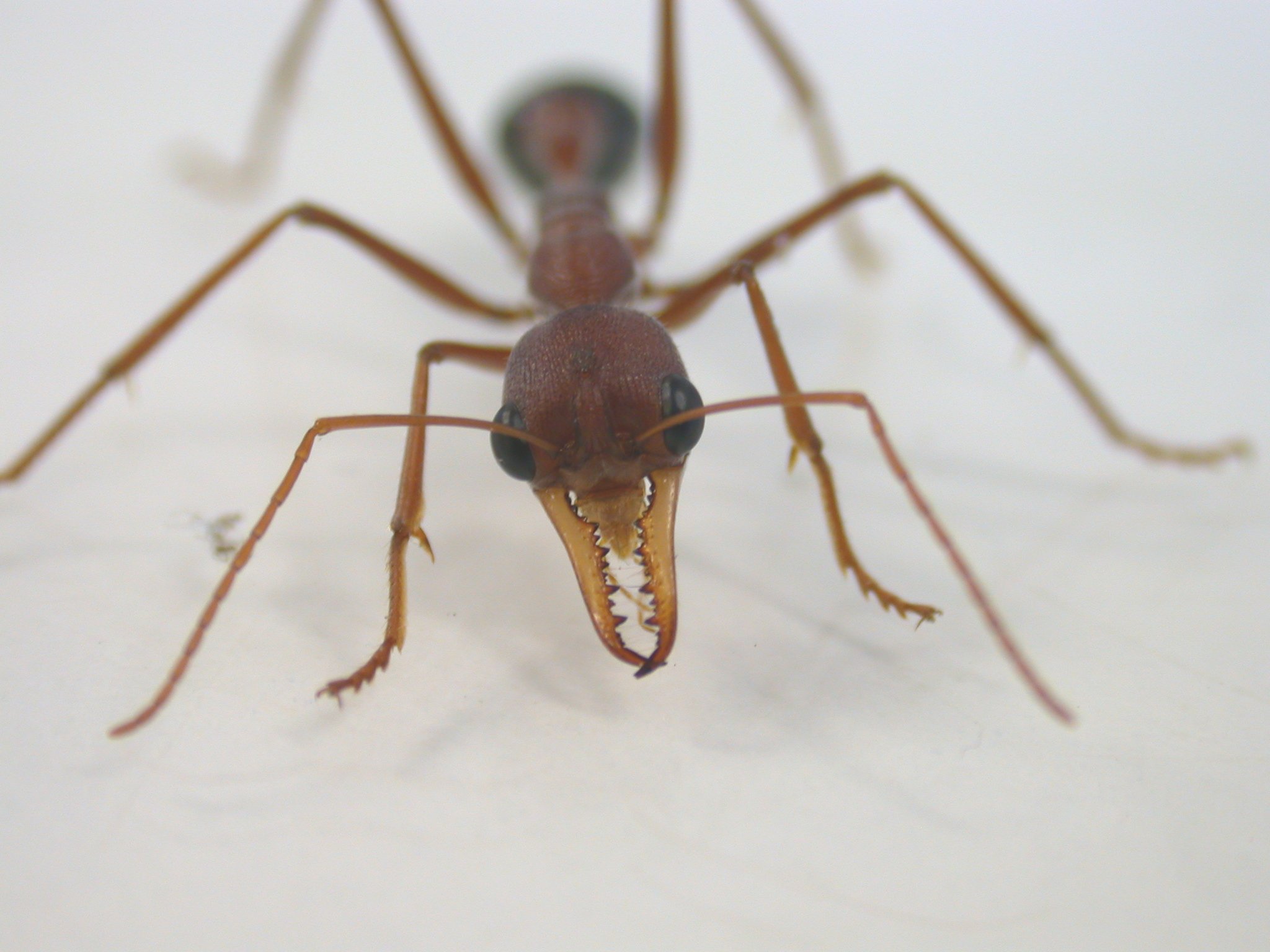 |
Native | Natural and urban areas. Underground nests | Painful sting |
|
(Ochetellus glaber) |
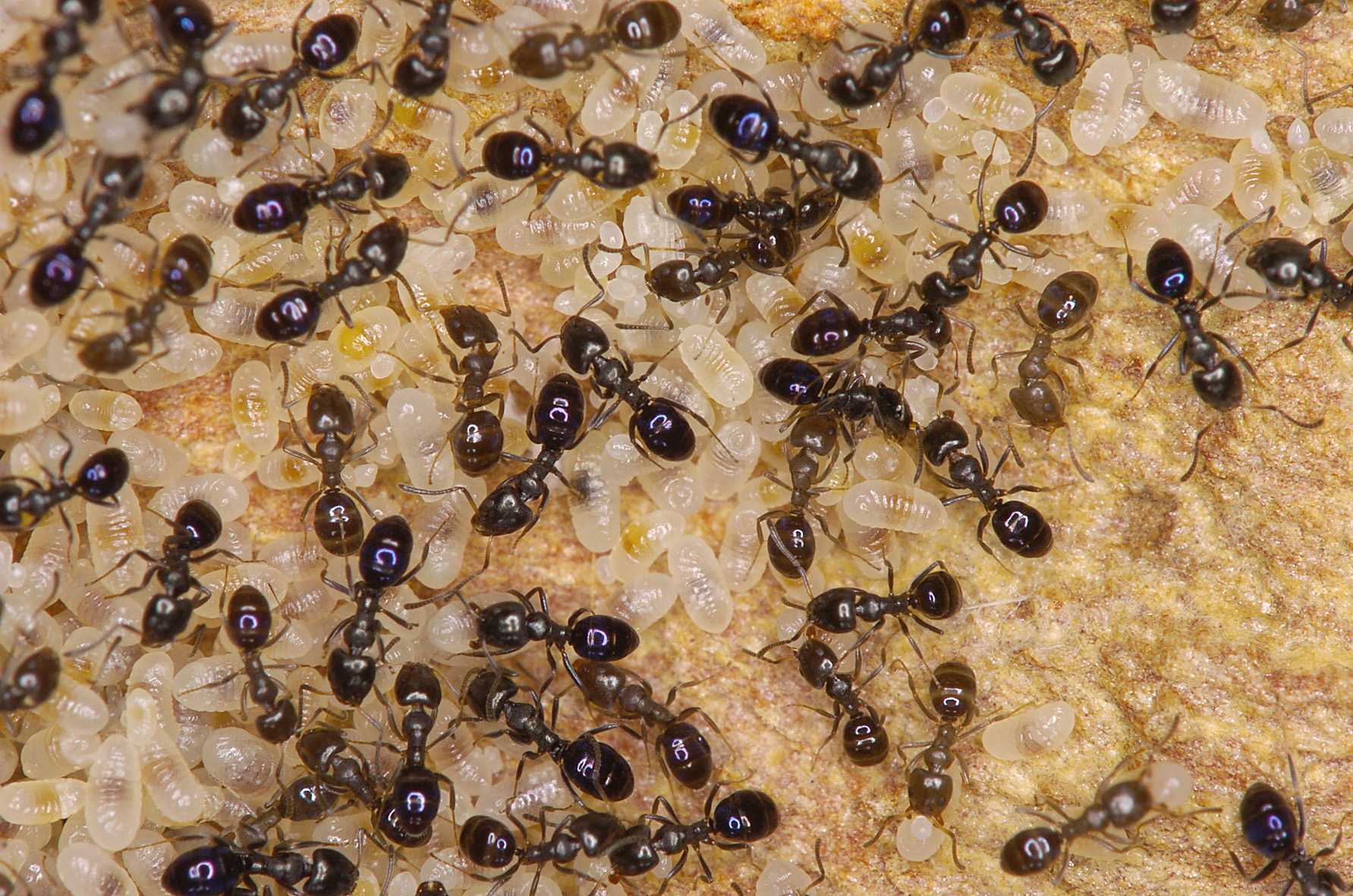 |
Native | House infesting and attracted to sweet liquids and foods | Does not bite or sting |
|
Cocktail ant (Valentine ant) (Crematogaster spp.) |
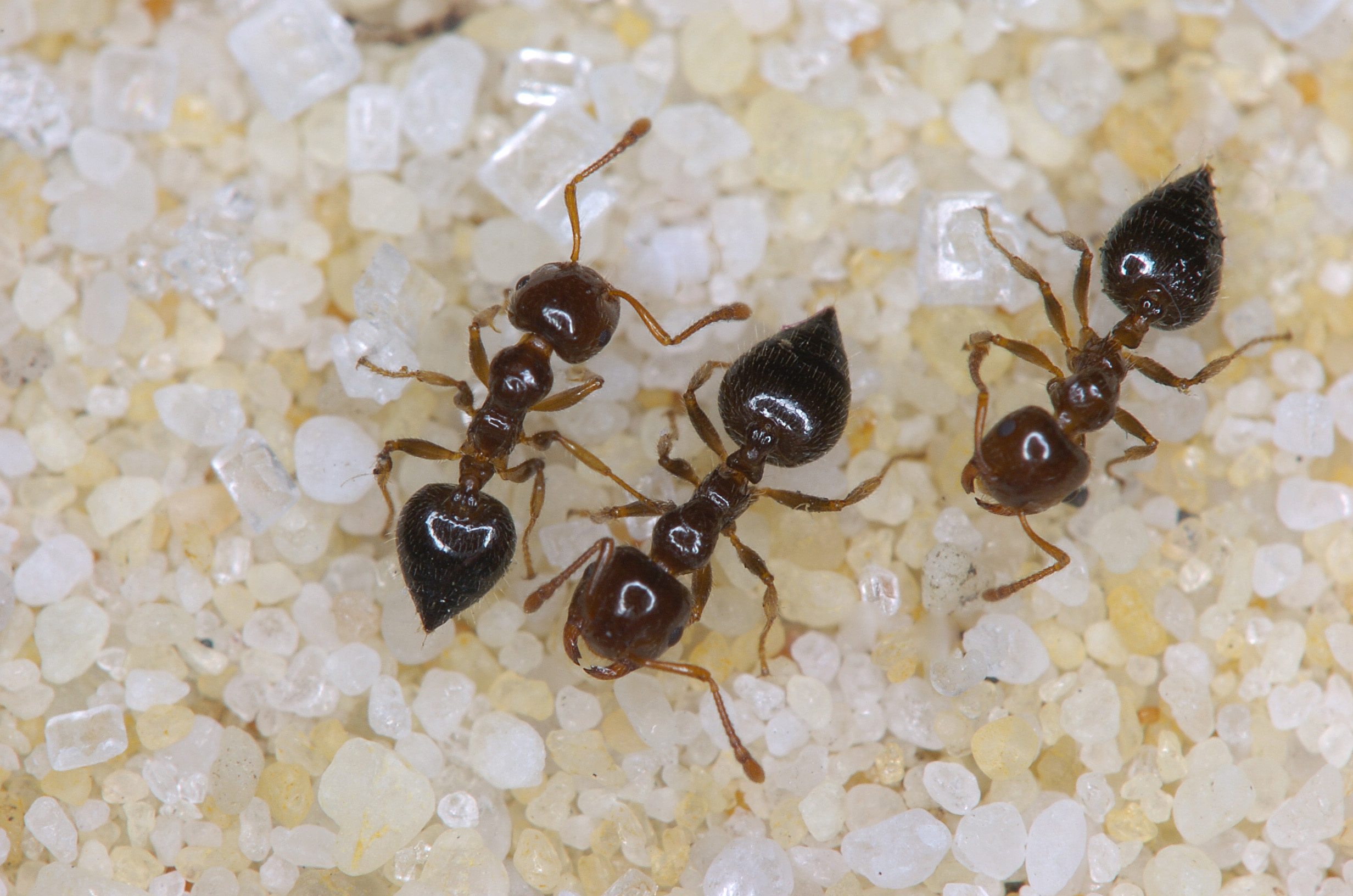 |
Native | Bushland and residential blocks, usually in bushland | Does not bite but can sting |
|
Night or nocturnal ant Camponotus species (not Carpenter ants) |
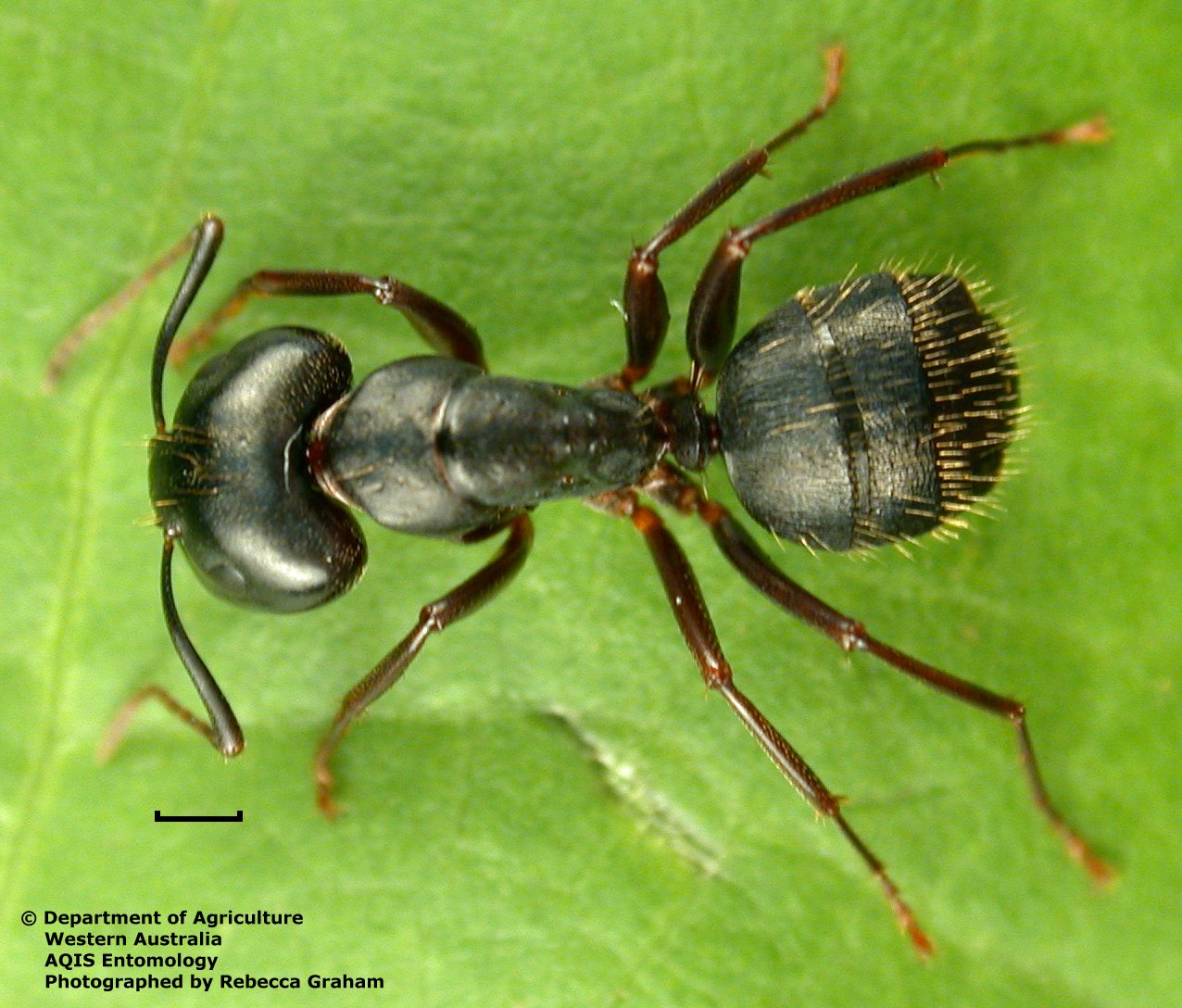 |
Native | Nests in old trees, woodpiles and in the ground | Some species will bite |
|
(Rhytidoponera metallica) |
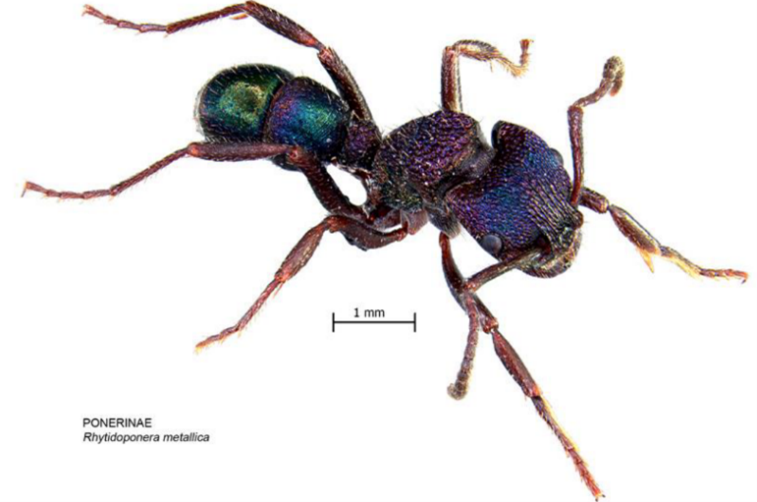 |
Native | Nests in the ground. Found outside in both urban and natural areas. | Painful sting. |
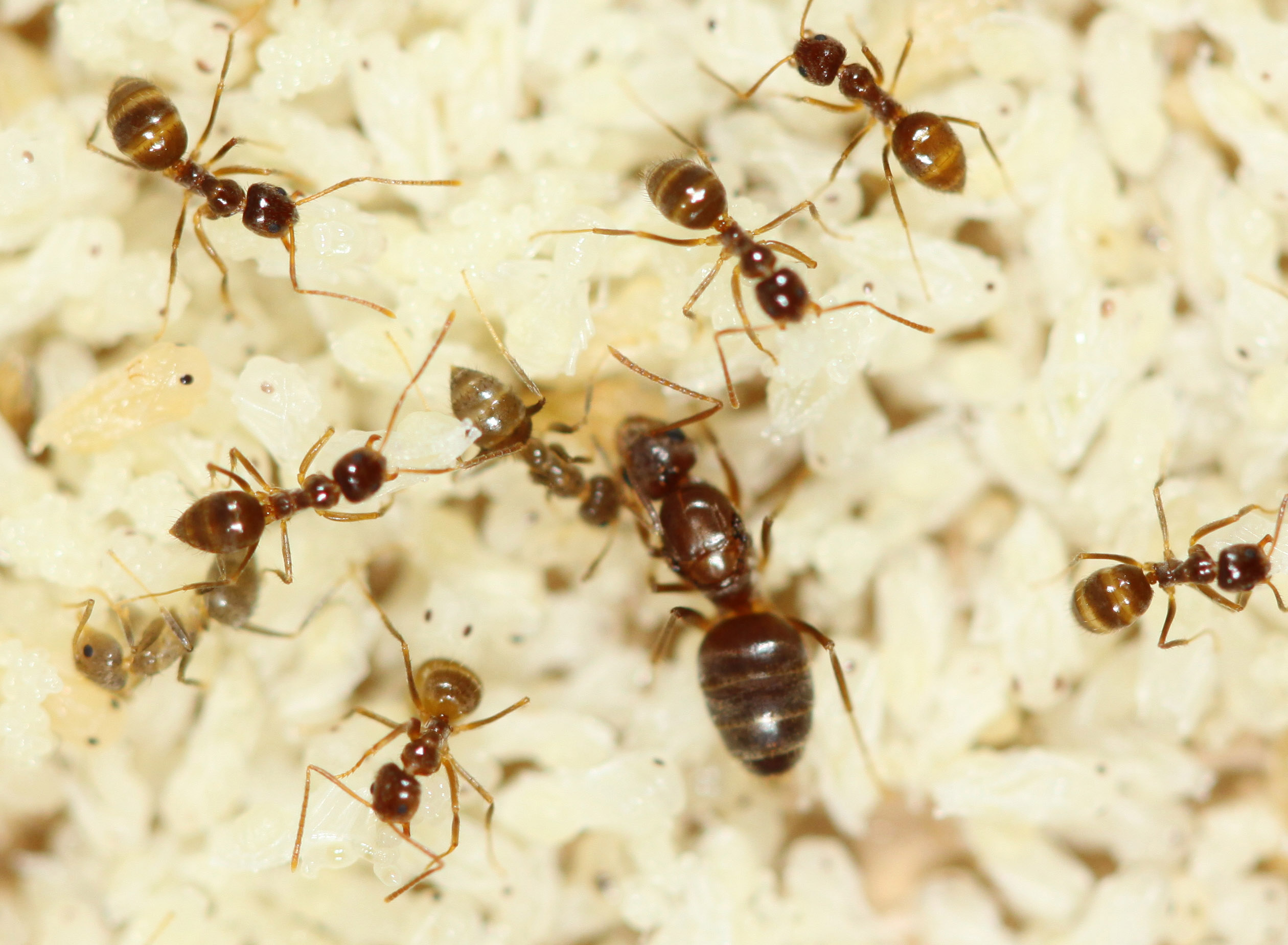 |
Native and introduced | Nests in the ground outside. Excavate sand in gardens, lawns and pathways | Harmless. Does not sting | |
|
(Iridomyrmex chasei spp.) |
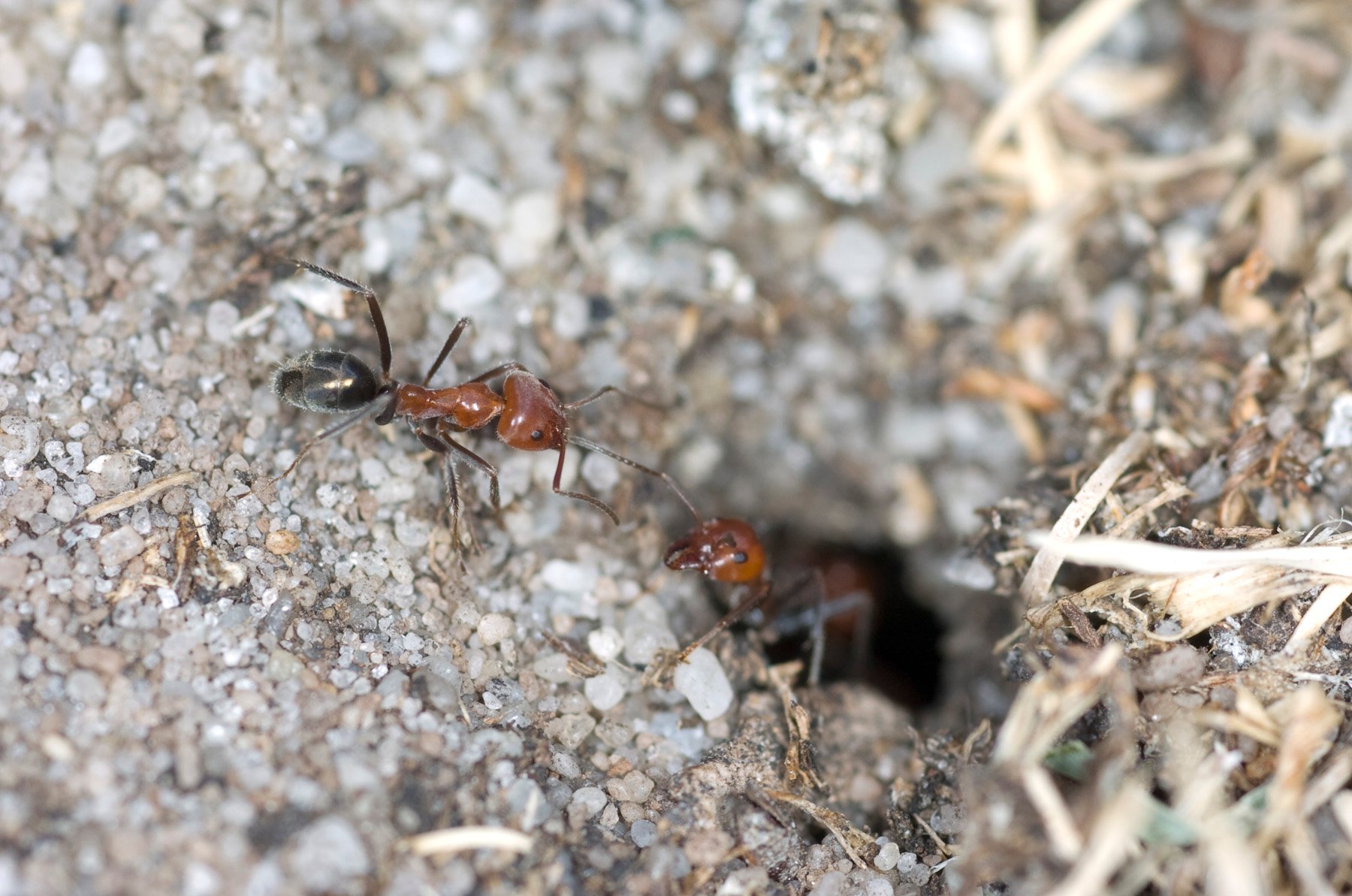 |
Native | Nests in the ground, disturbs sand in gardens and pathways |
Does not sting but will swarm and bite. Nuisance in spring and summer |
|
(Technomyrmex spp.) |
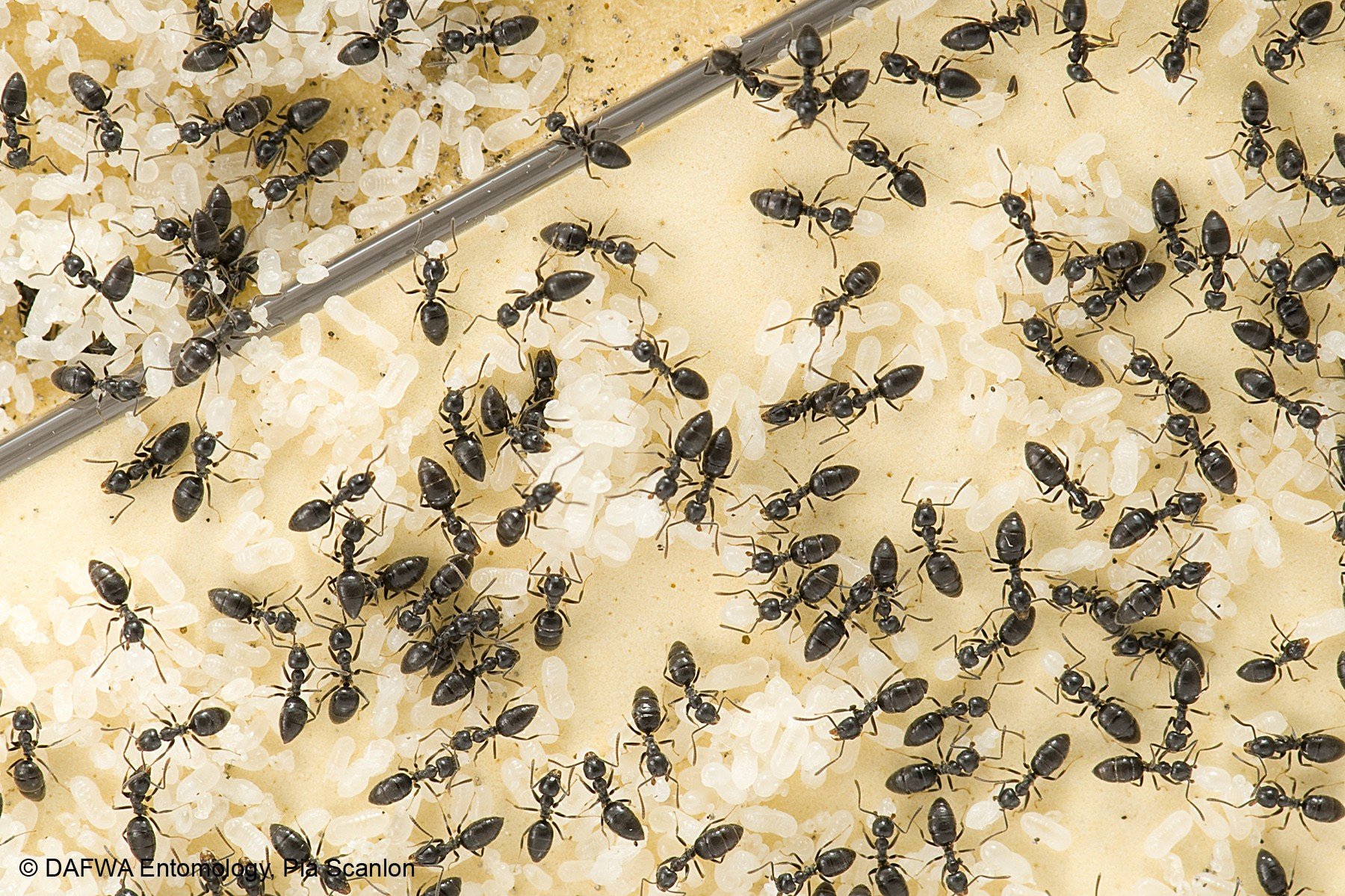 |
Native and introduced species | Nest in roof and wall spaces, electrical equipment, and electrical kitchen appliances | Does not bite or sting |
-
Flyer: High risk ants for WApdf (598 KB)
-
Flyer: High risk ants for Cocos (Keeling) and Christmas Islandspdf (653 KB)

